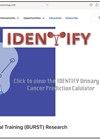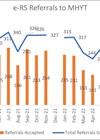Background
The current treatment paradigm for detrusor overactivity (DO) and dysfunctional voiding (DV) includes conservative measures, pharmacotherapy, intravesical onabotulinum toxin A (Botox®), sacral nerve modulation (SNM / SNS) and urinary diversion as a last resort [1].
Incidence of DO is reported between 12.8 and 17.4% of women and 0.3 and 15.7% of men [2]. The prevalence of DV remains unknown [3]. The latest European Association of Urologists (EAU) guidelines suggest SNM should be offered alongside Botox [4].
Markland et al. report an overlap between DO and faecal incontinence in 18% of patients [5]. The literature reports that SNM is cost-effective after five years when compared to Botox [6]. With the improvement in technology and availability of implants lasting 15 years, SNM has become a formidable contender in cost dominance. In this article we will describe our experience in providing an ambulatory SNM service. The benefit of providing an ambulatory local anaesthetic service is to help bring down the cost of providing an SNM service, allowing more patients access to treatment against the current status quo which is intravesical Botox injections.
Our experience
Patient selection is key for SNM. Selection criteria includes appropriateness for treatment, refractory proven DO and / or DV, BMI<35, age<55 (or older at the consultant’s discretion), ability to lie prone and patient willingness. A lower BMI allows for improved success in device implantation and patients below the age of 55 have reported improved outcomes in the literature [8]. Patients are provided with visual decision aids and patient information leaflets to familiarise themselves with the treatments and time given to consider the options especially in the current climate where patient choice is essential in providing adequate care and part of the informed consent process. Once a decision is made, clear counselling with a clear explanation in lay terms is used to explain what is expected on the day of the procedure as well as the steps involved. Maintaining communication with the patient on the day and throughout the procedure is essential to ensure a smooth process. The contribution of a specialist nurse is vital.
"Patients are provided with visual decision aids and patient information leaflets to familiarise themselves with the treatments and time given to consider the options"
Initially patients are tested for suitability for SNM with peripheral nerve evaluation (PNE). Objective assessment of patient symptoms pre and post treatment is obtained in the form of a bladder diary, symptom and quality of life questionnaires for one to two weeks before and after the intervention. On the day of the procedure the patient is admitted to a pre-admission suite. The steps of the procedure are explained again and patient feedback on comfort throughout the procedure is encouraged. The procedure can be performed in a room suitable for radiological interventions with the availability of a C-arm. This could be in a video urodynamics room, X-ray department or an outpatient theatre. The patient is positioned in a prone position with supporting pillows. Once the World Health Organization (WHO) checklist is completed the patient’s skin is disinfected and draped.
A short-acting local anaesthetic is infiltrated at the site of needle insertion with careful consideration to prevent sacral nerve blockade. It is important to maintain communication throughout the procedure to ensure the patient is at ease. This ensures the procedure is tolerable and the patient remains as comfortable as possible. Performing the procedure under local anaesthetic also allows for patient feedback as the leads are tested and a response is elicited. Once adequate response is achieved the leads are dressed and attached to an external stimulator. Post procedure the patient is counselled regarding the use of the external stimulator and regarding overall care including bathing. The patient is prompted to record a bladder diary and symptom questionnaire to help assess treatment success at one to two weeks.
If the patient is deemed successful at follow-up they are listed for a permanent device. A decision regarding chargeable versus non-rechargeable devices is taken with the engagement of the patient. Consideration of patient factors for the need for device exchange in non-rechargeable SNS at 10 years on average. The InterStim X™ non-rechargeable device is expected to last up to 15 years and the industry anticipates this will lead to a 90% increase in patients choosing non-rechargeable devices. SNS implantation is done similarly to PNE with the addition of pouch formation under the skin and fascia for device placement. Following discharge, the patient is reviewed the following week for device activation, charging, training and familiarisation with pre-set programmes. Further follow-up is planned at three months and twelve months to measure and assess treatment success. It is essential to provide regular remote and questionnaire follow-up with easy access to the department for issues revolving around device failure, malfunction, lead migration and / or need for battery exchange.
TAKE HOME MESSAGES
-
An ambulatory local anaesthetic SNS service can be provided safely.
-
Good patient selection, clear communication, availability of resources and technical experience are essential to the success of the service.
-
Follow-up has become more accessible to patients with remote review with pre-programmed devices. This is achievable with phone clinics and nearby appointments further decreasing patient and healthcare burden.
-
The aim of a local anaesthetic service is to help bring down the cost of SNS, making it a financially viable treatment for more patients.
References
1. Biers SM, Harding C, Belal M, et al.; BAUS Section of Female, Neurological and Urodynamic Urology. British Association of Urological Surgeons (BAUS) consensus document: Management of female voiding dysfunction. BJU International 2022;129(2):151-9.
2. Nobrega R, Greenwell T, Pickard R, et al. Sacral nerve stimulation versus intravesical botulinum toxin injections for medically refractory overactive bladder: A contemporary review of UK treatment from both clinician and patients’ perspectives. Journal of Clinical Urology 2018;11(5):339-44.
3. Morin F, Akhavizadegan H, Kavanagh A, Moore K. Dysfunctional voiding: Challenges of disease transition from childhood to adulthood. Canadian Urological Association Journal 2018;12(4 Suppl 1):S42-7.
4. Nambiar AK, Arlandis S, Bø K, et al. European Association of Urology Guidelines on the Diagnosis and Management of Female Non-neurogenic Lower Urinary Tract Symptoms. Part 1: Diagnostics, Overactive Bladder, Stress Urinary Incontinence, and Mixed Urinary Incontinence. European Urology 2022;82(1):49-59.
5. Markland AD, Richter HE, Kenton KS, et al.; Urinary Incontinence Treatment Network. Associated factors and the impact of fecal incontinence in women with urge urinary incontinence: from the Urinary Incontinence Treatment Network’s Behavior Enhances Drug Reduction of Incontinence study. American Journal of Obstetric Gynecology 2009;200(4):424.e1-8.
6. Tay LJ, Harry D, Malde S, Sahai A. Cost Effectiveness of Sacral Neuromodulation and OnabotulinumtoxinA in Managing Refractory Idiopathic Overactive Bladder. Urology 2021;149:1‑10.
7. Amundsen CL, Romero AA, Jamison MG, Webster GD. Sacral neuromodulation for intractable urge incontinence: are there factors associated with cure? Urology 2005;66(4):746-50.
Declaration of competing interests: None declared.







